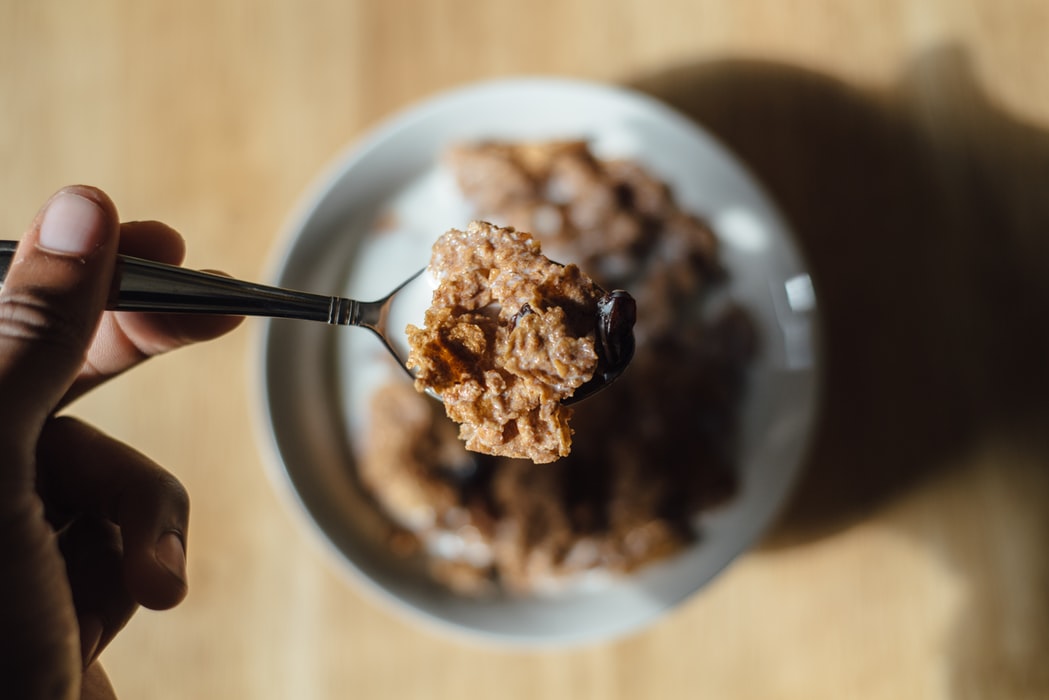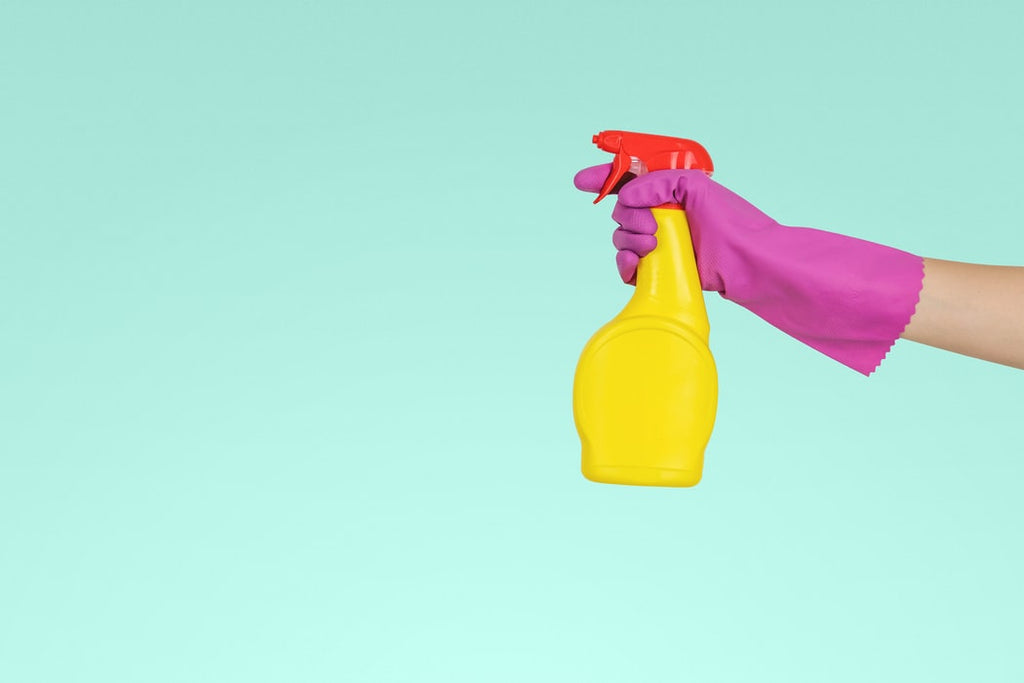
Allow us to reiterate something your mother told you long ago: Rumors are bad. They make it nearly impossible to distinguish between fact and fiction. And lately, we’ve been wanting to get to the bottom of a rumor circulating the deep, dark depths of the internet: That trisodium phosphate in cereal is also the primary ingredient in paint thinner.
Whoa.
You know how seriously we take our cereal. Granted, we’re not too picky about how you eat it. Straight out of the bag? You betcha. Dipped in ice cream? Of course. Eaten as a dinner entree? Hey, you can’t always have steak. But we are quite picky about what goes into our cereal.
We’re not big fans of added sugar in cereal, so if white sugar, corn syrup, and wheat flour don’t meet our standards, you know toxic paint thinner doesn’t stand a chance. But if you want the cold, hard facts on trisodium phosphate in cereal, you’ll find conflicting information across the world wide web.
For the sake of our shared love for breakfast cereal, we decided to do a little bit of research. If you share the same high standards we have about what goes into your morning bowl — not just how you serve it — you might want to keep reading.
What Is Trisodium Phosphate?
In the simplest terms, trisodium phosphate is a food additive and preservative. The USDA classifies trisodium phosphate as “generally recognized as safe” (GRAS), allowing its use in baked goods, breads, meats, and cheese.
Trisodium phosphate is made by combining sodium and phosphate (which is derived from phosphorus). Phosphorus and sodium are both beneficial minerals that are linked to numerous health benefits. Each of us needs phosphorus in our diets to have healthy, strong bones, build protein, and store energy.
Trisodium phosphate is just one of several other phosphate additives the food industry uses, including tripolyphosphate, tripotassium phosphate, hexametaphosphate, acid pyrophosphate, and orthophosphates.
According to the USDA, phosphates serve a dual purpose: One, they help certain food products, particularly meat products, retain moisture; and two, they help with flavor protection.
So, you might see phosphates used to cure and preserve meats, particularly with packaged products such as sausage, bacon, and lunch meat. In baked goods, they help extend shelf-life and act as a leavening agent for packaged muffins, cakes, and store-bought cookies.
Is Trisodium Phosphate Damaging to Your Health?
Well, this is where things get a little dicey.
The USDA states that trisodium phosphate is generally safe, but that’s not always the best measurement of health. Case in point: The USDA doesn’t have any issues with grains or added sugar.
On the other hand, some organizations are a bit skeptical. The Environmental Working Group, for example, believes sodium phosphates are of “moderate concern.” The non-profit organization cites several studies noting that sodium phosphates have been linked to an increased risk in chronic kidney disease, cardiovascular disease, and coronary artery disease.
A Washington Post article, which noted the use of phosphates in packaged meats, quoted experts who said that phosphates are connected to many health risks, including early death. The problem is, a lot of research about phosphates is ongoing, leaving a number of questions unresolved.
What’s This About Trisodium Phosphates in Paint Thinner?

In recent years, health blogs have slammed the U.S. Food and Drug Administration (FDA) for allowing the use of trisodium phosphate in cereal. In fact, a Change.Org petition garnered more than 1,350 signatures calling for big brands, namely General Mills, to remove the use of trisodium phosphate in popular cereals including Cheerios, Golden Grahams, Lucky Charms, and Honey Comb.
The petition describes trisodium phosphate as a chemical that is “dangerous and is not healthy for a human to consume.” It also states that the ingredient is “used in paint thinners and cleaning products.” And while it acknowledges the FDA’s claim that the ingredient is safe, it offers a counter-argument saying, “Why have it at all? TSP is linked to cancer, kidney damage, calcium deficiency, and osteoporosis.”
Those who signed the petition have a valid point. According to the National Institute of Health (NIH), trisodium phosphate is used in soap powders, detergents, antimicrobial cleaners, and other cleaning agents.
It also has the power to act as a degreasing agent and bleach for your countertops. It’s used as a cleaning (and bleaching) agent in a number of industrial cleaning products, paint removers being one of them. You can also find it hidden in cosmetics, pharmaceuticals, and photochemicals, as well as toothpaste, mouthwash, baking soda, and food.
Why Is There Trisodium Phosphate in Cereal?

We’re not usually ones to pick sides (hold on one second, we’re totally ones to pick sides when it comes to cereal), but we can’t help but agree with those on Change.org — if something is powerful enough to strip paint off walls, should it really be going into your digestive system?
Various “debunking” sites state that trisodium phosphate is safe to consume because the amounts used in foods are far less than the high levels of phosphates used in cleaners and industrial products.
For example, consuming one gram of trisodium phosphate could cause health problems, including diarrhea and abdominal pain. However, the amounts used in food-grade trisodium phosphate, like breakfast cereal, are far less.
In 2015, General Mills fired back at a series of tweets from consumers angered about the use of trisodium phosphate in their cereal. The brand assured buyers that trisodium phosphate was “just salt” that adjusts the acidic nature of food, and adjusts the cereal color. The company also brought up the FDA, noting that the federal organization marked the product as safe to use in a number of foods.
Consumers — ourselves included — didn’t buy it. Users remarked that there are plenty of cereals that don’t use TSP (hello, Cereal School), and the level of freshness is “just fine.”
Another gutsy consumer shared a photo of a paint thinner product, which clearly says that it is “harmful if swallowed.” This is entirely accurate, as the Center for Disease Control (CDC) and the NIH advise you to "rinse mouth...give one or two glasses of water to drink. Refer immediately for medical attention" if ingested.
So why on earth is it being used in breakfast cereal (which is, in fact, ingested)?
Should You Be Worried About Trisodium Phosphate in Cereal?
Short answer: Probably.
Trisodium phosphate is a food additive used in packaged baked goods and meat products. Over the past several years, large cereal companies, like General Mills, have caught some heat for including it in their breakfast cereal. And why wouldn’t they? This chemical is used in industrial products, such as bleach and paint thinner.
However, the USDA has marked trisodium phosphate as generally safe, and you would need to ingest large amounts of it (far more than you’ll find in your morning bowl of Lucky Charms) for it to pose a serious health risk.
So, you need to ask yourself, what do you want to be putting into your body? Certain foods, like sugar, aren’t toxic in small doses, but repeated consumption can lead to various health risks.
At Cereal School, we believe there’s no need for trisodium phosphate in food. That’s why we don’t include any harmful preservatives or questionable ingredients in our products — leave that stuff for the paint thinner.



